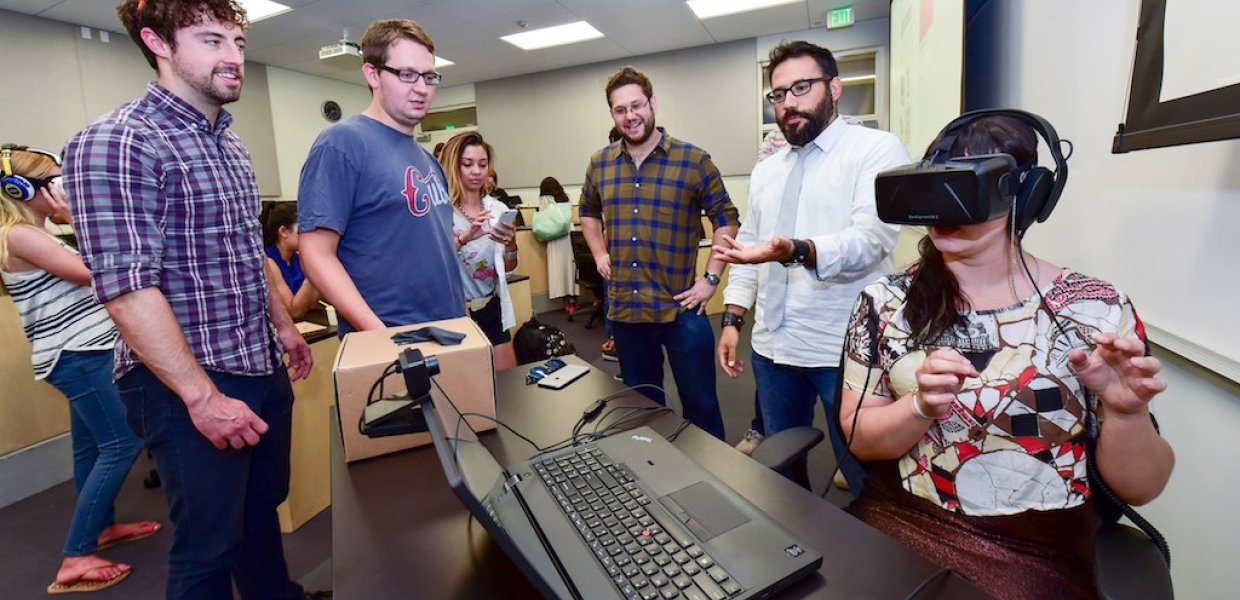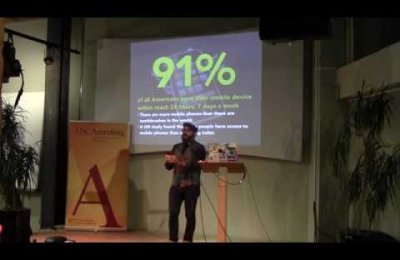USC Annenberg professors have said that understanding and making use of digital tools are no longer just skills for our students to pad their resumes — they’re the new requirements.
Through a series of special topic classes (JOUR 499), the school gives students the opportunity to familiarize themselves with programming languages and new technologies like Python and Google Cardboard that will soon become standards in the journalism industry.
One of the few true veterans of web journalism is professor Robert Hernandez, who focuses on the intersection of technology and storytelling. Hernandez’s class “Creating on Emerging Technologies” attracts students from all majors to explore new technologies that are changing the field of journalism and communication.
In his class, students come together in what is essentially a semester-long hackathon. Hernandez even interviews all of his students beforehand to ensure there is a good balance of diverse skillsets.
“The first thing I do with my students is to demystify technology, get them to embrace it and feel open and a bit confident to experiment,” Hernandez said. “The goal is to get the students comfortable in this constant change and teach them the fundamentals on how to teach themselves how to think and answer questions for themselves.”
Hernandez was not alone in noticing how some students shy away from learning new technologies because they are intimidated. Professor Peggy Bustamante, who teaches “Introduction to Coding for Creative Storytelling,” said that what prevents students from learning these new technologies is fear itself. She said coding is a skill that anyone can learn.
“Coding is not brain surgery,” Bustamante said. “It is a logical skill. Once you learn the tools, the creativity is up to you. Frequently, coding is presented as something only a few ‘smarter-than-you’ people can learn. In fact, it is like video editing: it looks scary until you learn the tools, then it is just plain fun.”
Bustamante’s class focuses on coding for the web using HTML, CSS, JavaScript and jQuery. Her class next spring will introduce students to Python, a coding language crucial for data journalism.
New technologies mean that students must meet new industry standards. What is expected of students now, in addition to traditional core journalism skills like writing well, includes an understanding of social media, coding languages, and video and audio editing software.
“We have determined that there is a floor that every USC Annenberg student needs to meet, which is HTML, CSS and some Javascript,” Hernandez said. “Know how the internet works, know how to use your phone to create content, know how social media works, know how to do video, how to write a story — that’s the floor for us. The floor keeps changing, but everyone needs to hit that floor.”
More USC Annenberg students have realized the pressing need for them to meet these new minimums. Digital professors have noticed a shift in the kinds of students who take their classes in recent years.
Bustamante said that while her class was made up entirely of journalism students in 2013, an increasing number of public relations and communication students have been taking her classes in the past two years.
As the emergence of new technologies continue to shake up the fields of journalism and communication, being able to learn and adapt will become integral elements of staying employable.
Professor Matthew Le Veque, who teaches “Monitoring, Engagement and Content Creation for Integrated Communication,” encouraged students to peruse the USC Annenberg course catalogue. While his class teaches students to use social media analytics tools to create actionable insights, he urges students to go out and find classes that they are excited about. He also assures students that faculty members are friendly and more than happy to explain what their classes are about.
Many of the school’s classes are very progressive, which Le Veque says is what differentiates USC Annenberg from other journalism schools.
“The industry is in such a state of disruption that the education process never stop,” Le Veque said. “You need to be responsible, and you get what you put in. There are some gems out there beyond the required courses.”
Adopting new technologies teaches students something more: problem solving. In the process, Hernandez said students’ brains become wired to continuously troubleshoot and learn through trial and error.
“I want to teach them how to fish,” Hernandez said. “If something doesn’t work, you can fix it; you can figure it out; calm down; you can probably Google it and get an answer by yourself.”
Ultimately, technology is simply a tool to enhance storytelling. What the professors said was important was not necessarily becoming programming experts, but to use technology in a strategic and narrative way.
“The first rule for us is journalism first, technology second,” Hernandez said. “The journalism is the point; the technology is just a tool in our toolbox.”





